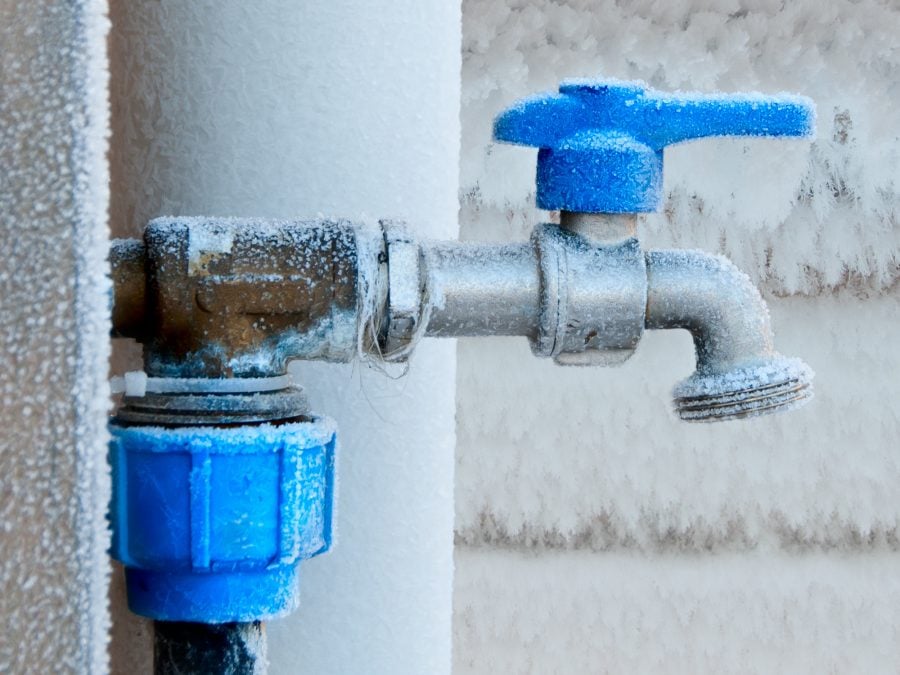Preventing Frozen Pipes in Winter: Professional Advice
Preventing Frozen Pipes in Winter: Professional Advice
Blog Article
The content which follows in relation to How To Avoid Freezing Pipes is highly enjoyable. Don't overlook it.

Winter can wreak havoc on your pipes, particularly by freezing pipes. Right here's just how to prevent it from occurring and what to do if it does.
Intro
As temperature levels drop, the risk of frozen pipes increases, potentially bring about costly repairs and water damages. Recognizing exactly how to stop icy pipes is vital for homeowners in cool environments.
Recognizing Frozen Pipelines
What triggers pipelines to ice up?
Pipes freeze when exposed to temperatures listed below 32 ° F (0 ° C) for prolonged periods. As water inside the pipes ices up, it expands, taxing the pipe walls and potentially creating them to burst.
Threats and problems
Icy pipes can bring about water system disruptions, property damages, and pricey repairs. Burst pipelines can flooding homes and create substantial structural damages.
Indicators of Frozen Water Lines
Determining icy pipes early can stop them from bursting.
How to recognize frozen pipes
Look for lowered water flow from faucets, unusual odors or noises from pipes, and noticeable frost on revealed pipes.
Avoidance Tips
Protecting prone pipes
Wrap pipes in insulation sleeves or make use of warmth tape to safeguard them from freezing temperatures. Concentrate on pipes in unheated or outside locations of the home.
Heating strategies
Keep interior rooms appropriately heated, particularly locations with plumbing. Open closet doors to permit warm air to circulate around pipes under sinks.
Shielding Exterior Pipes
Garden tubes and exterior faucets
Detach and drain yard hose pipes before wintertime. Mount frost-proof faucets or cover outdoor taps with shielded caps.
What to Do If Your Pipes Freeze
Immediate activities to take
If you suspect frozen pipelines, keep faucets open up to relieve stress as the ice melts. Utilize a hairdryer or towels taken in hot water to thaw pipelines slowly.
Long-Term Solutions
Structural changes
Think about rerouting pipes far from exterior wall surfaces or unheated locations. Include added insulation to attic rooms, basements, and crawl spaces.
Upgrading insulation
Invest in top quality insulation for pipes, attics, and walls. Correct insulation aids maintain constant temperature levels and lowers the danger of frozen pipelines.
Conclusion
Preventing frozen pipes requires proactive measures and quick actions. By understanding the causes, indicators, and safety nets, homeowners can protect their pipes during cold weather.
6 Proven Ways to Prevent Frozen Pipes and Protect Your Home
Disconnect and Drain Garden Hoses
Before winter arrives, start by disconnecting your garden hoses and draining any remaining water. Close the shut-off valves that supply outdoor hose bibs and leave the outdoor faucet open to allow any residual water to drain. For extra protection, consider using faucet covers throughout the colder months. It’s also important to drain water from any sprinkler supply lines following the manufacturer’s directions.
Insulate Exposed Pipes
Insulating your pipes is an effective way to prevent freezing. Pipe insulation is readily available at home improvement stores and is relatively inexpensive. Pay close attention to pipes in unheated areas such as the attic, basement, crawl spaces, or garage. Apply foam insulation generously to create a buffer against the cold. You can also wrap your pipes in heat tape or thermostat-controlled heat cables for added warmth.
Seal Air Leaks
Inspect your home for any cracks or openings that could let in cold air. Seal any holes around the piping in interior or exterior walls, as well as the sill plates where your home rests on its foundation. Additionally, make sure to keep your garage door closed unless you’re entering or exiting. Leaving it open creates a significant air leak that can lead to frozen pipes.
Allow Warm Air Circulation
During cold snaps, it’s essential to allow warm air to circulate evenly throughout your home. Leave interior doors ajar to promote better airflow. Open kitchen and bathroom cabinets to help distribute heat consistently around the rooms. If you have small children or pets, be sure to remove any household chemicals or potentially harmful cleaners from open cabinets for safety.
Let Faucets Drip
A small trickle of water can make a big difference in preventing ice formation inside your pipes. When temperatures drop significantly, start a drip of water from all faucets served by exposed pipes. This continuous flow helps prevent the water from freezing. Additionally, running a few faucets slightly can relieve pressure inside the pipes, reducing the chances of a rupture if the water inside does freeze.
https://choateshvac.com/6-proven-ways-to-prevent-frozen-pipes-and-protect-your-home/

I have been very fascinated with How to prepare your home plumbing for winter weather and I really hope you appreciated my post. Appreciated our article? Please quickly share it. Let others locate it. I recognize the value of your readership.
Visit My Web Page Report this page